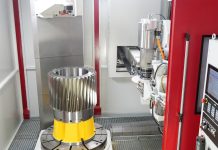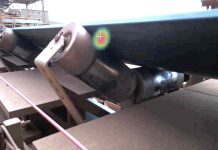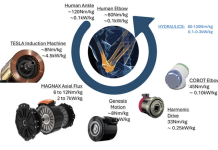Gearing up for predictive maintenance, by using software and sensors to determine the future of machines.
If predictions are correct, by 2021 25 billion devices will be connected to the internet of things (IoT). Here, Marek Lukaszczyk, European marketing manager at gearbox manufacturer, WEG explains where geared motor maintenance fits into this paradigm.
Geared motor units are the drive technology heavyweights needed to handle a large amount of data, power and torque. They provide the necessary motion sequences in machines and systems, helping to ensure that production lines run smoothly. If there is a fault with a geared motor, the knock-on effects can be very costly for businesses.
Due to the substantial forces involved, failings are often not detected in time and entire systems are brought to a standstill. This is potentially detrimental as other major operational components would also remain inactive until a replacement gearbox was installed.
While we might not be able to see into the future, we can do the best next thing – predict it. By using a predictive maintenance (PdM) strategy, maintenance staff can collect critical data, to help identify errors in performance. These insights can help people to fix issues months before they lead to potential failures; avoiding downtime, reducing maintenance overspend and alleviating operational risks.
A Smarter Method to Maintenance
PdM is a technique that relies on condition-monitoring equipment to evaluate the operational performance in real-time. By merging the condition-based diagnosis with predictive formulas, PdM creates a precise tool for collecting and assessing data.
This idea is based on anticipating the future of a system, highlighting potential failures that may occur and the maintenance actions that need to be attended too. A data-driven approach uses predictive analytics and algorithms based on real-time data to identify the specific issue — many of which do not present any physical signs of damage.
In some cases, companies can invest a lot of resources and time in carrying out maintenance checks but lack the data to know if their strategy is effective or even addressing their main concerns. But there is a better alternative.
WEG Forward Focus
WEG Motor Scan is arguably a geared motor’s first step into IoT. It enables predictive maintenance in a cost-effective way to extend geared motor lifespans. Combining WEG Motor Scan and its related software — WEG Motor Scan Gateway, allows maintenance staff to see motor performance analytics at a glance, from a phone, computer or human machine interface (HMI).
The sensor can be applied to both old and new gearboxes including electric motors, giving complete diagnostic data of the motor’s condition, allowing for the monitoring of surface temperature, overall vibration analysis and data on running time, speed, and lubrication intervals, while also calculating any misalignments.

The collected data can be transferred via the app or Bluetooth allowing it to be stored on a secure cloud-based platform, where multiple sensor data can be viewed at once The Internet of Things (IoT) platform of the software offers an extensive overview for diagnostics and enables configuration of alarms when the set values are surpassed.
Could this way of maintaining gearboxes become the norm? It is estimated that by 2021 25 billion devices will be connected to IoT, and we think geared motors should be included in this figure. For maintenance staff ready to take the first steps into the IoT realm, there are four free gearbox technical guides available at www.weg-wg20.com, explaining fundamental gearbox buying and maintaining advise.
If you want to ensure you keep up to date with WEG visit www.weg.net





